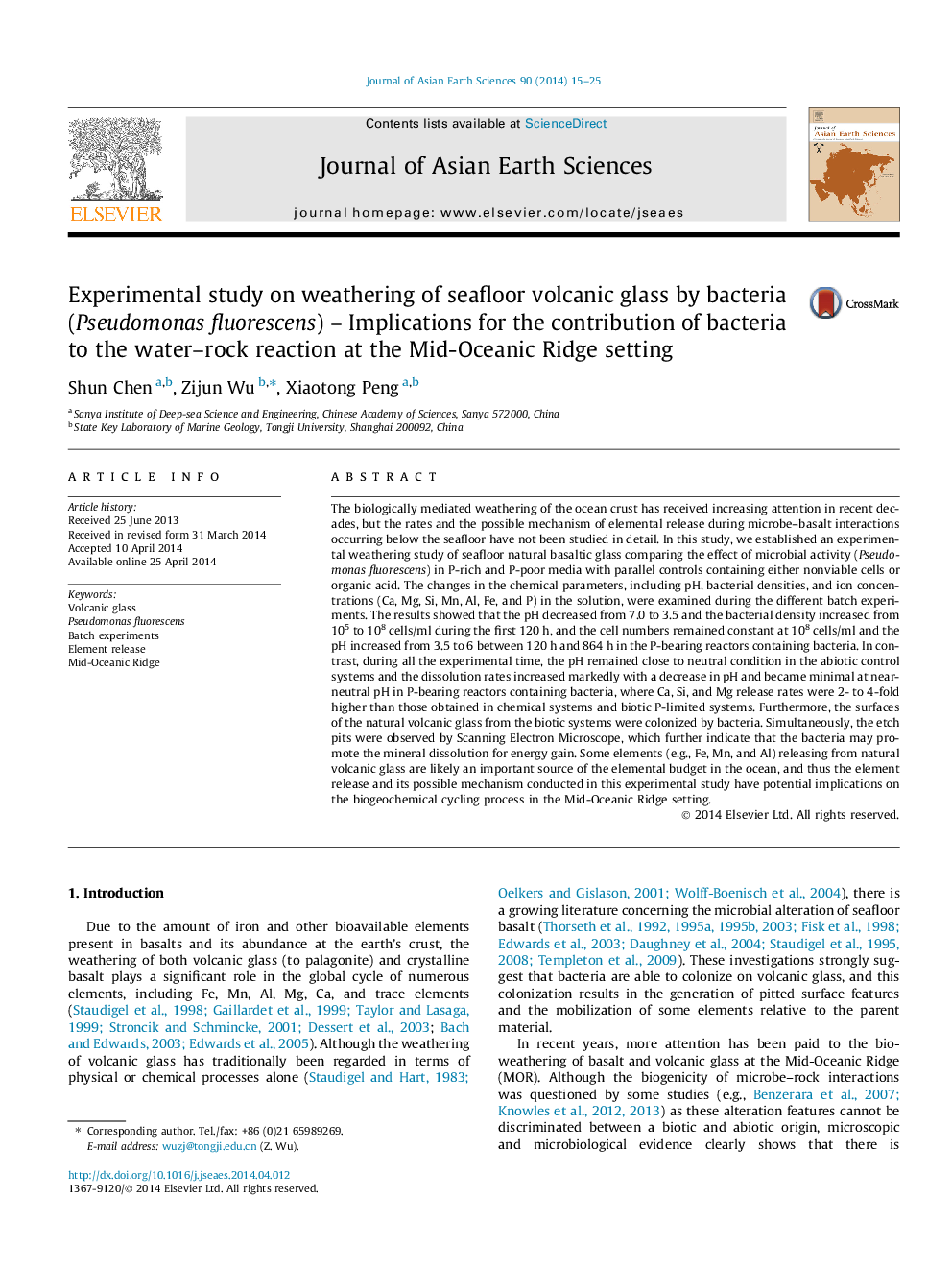| Article ID | Journal | Published Year | Pages | File Type |
|---|---|---|---|---|
| 6444429 | Journal of Asian Earth Sciences | 2014 | 11 Pages |
Abstract
The biologically mediated weathering of the ocean crust has received increasing attention in recent decades, but the rates and the possible mechanism of elemental release during microbe-basalt interactions occurring below the seafloor have not been studied in detail. In this study, we established an experimental weathering study of seafloor natural basaltic glass comparing the effect of microbial activity (Pseudomonas fluorescens) in P-rich and P-poor media with parallel controls containing either nonviable cells or organic acid. The changes in the chemical parameters, including pH, bacterial densities, and ion concentrations (Ca, Mg, Si, Mn, Al, Fe, and P) in the solution, were examined during the different batch experiments. The results showed that the pH decreased from 7.0 to 3.5 and the bacterial density increased from 105 to 108Â cells/ml during the first 120Â h, and the cell numbers remained constant at 108Â cells/ml and the pH increased from 3.5 to 6 between 120Â h and 864Â h in the P-bearing reactors containing bacteria. In contrast, during all the experimental time, the pH remained close to neutral condition in the abiotic control systems and the dissolution rates increased markedly with a decrease in pH and became minimal at near-neutral pH in P-bearing reactors containing bacteria, where Ca, Si, and Mg release rates were 2- to 4-fold higher than those obtained in chemical systems and biotic P-limited systems. Furthermore, the surfaces of the natural volcanic glass from the biotic systems were colonized by bacteria. Simultaneously, the etch pits were observed by Scanning Electron Microscope, which further indicate that the bacteria may promote the mineral dissolution for energy gain. Some elements (e.g., Fe, Mn, and Al) releasing from natural volcanic glass are likely an important source of the elemental budget in the ocean, and thus the element release and its possible mechanism conducted in this experimental study have potential implications on the biogeochemical cycling process in the Mid-Oceanic Ridge setting.
Related Topics
Physical Sciences and Engineering
Earth and Planetary Sciences
Geology
Authors
Shun Chen, Zijun Wu, Xiaotong Peng,
